
It's not autumn without some mum cookies! In fact, I've got one mum project for each year all the way back to 2017, when I shared how to decorate a potted mum in Step 2 of this Cookie Connection tutorial.

This month's project tutorial is quite quick and easy once the cookies are cut out and baked. But, as I am often asked how I get my ideas, I would like to focus on the design, and how inspiration can strike anywhere, at any moment. This time, my inspiration was a video by @sunblest_gardens (aka SunBlest Gardens) that popped up in my TikTok feed: a panoramic view of an army of potted mums. They were green and not yet blooming. My idea for cookie shapes crystallized when the camera turned to a certain angle that highlighted the tidy mum display and the fascinating pattern it had created. (To show you what I mean, below are screenshots of the particular frame from SunBlest Gardens' video that caught my eye. I've posted them here with SunBlest Gardens' permission, but I suggest you watch their entire short video of this chrysanthemum paradise.)
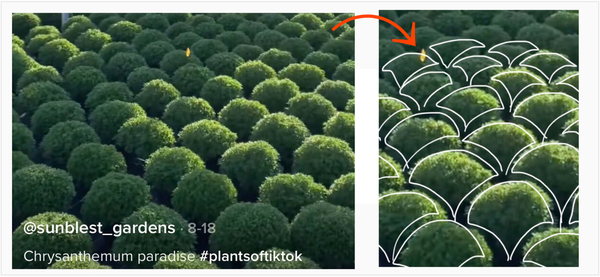
I immediately saw a cookie composition in the pattern, and so I sketched it out, complete with blooming mums. When I later went to check out SunBlest Gardens' Instagram feed, I found what I had envisioned (the pattern in bloom!), albeit at a slightly different angle. Here’s another screenshot of my discovery, again posted with SunBlest Gardens' permission.
Disclosure: This tutorial is not sponsored by SunBlest Gardens. They have simply been kind to grant me permission to use screenshots of their posts for the purposes of creating this tutorial.
- Cookie dough of your choice
- 1 (6-cm/2 3/8-in) round cookie cutter
- Graph paper
- Scale and half-scale templates (see Step 1 for details)
- Paring or sugarcraft knife
- Parchment paper and/or silicone baking mat
- Royal icing:
- White piping-consistency, in pastry bag with PME #1 tip (or equivalent)
- Grey and green flood-consistency, in tipless pastry bags with openings equivalent to Wilton #2 tip
- Yellow, pink, and orange piping-consistency, in tipless pastry bags with openings equivalent to PME #1 tip
- Fine liner paint brush
- White gel food coloring
Step 1: Cut out and bake cookies
First, below is a visual summary of the three cookie shapes that you will need. They are all cut with the same (6-cm/2 3/8-in) round cookie cutter, just in different ways: once (a. round cookie), three times (b. scale cookie), and three times and then cut in half (c. half-scale cookie).
- 2 round cookies (a)
- 6 scale cookies (b; see Steps 1a and 1b below)
- 4 half-scale cookies (c; basically, 2 more scale cookies cut in half)
a. To make a template for the scale cookie, use the (6-cm/2 3/8-in) round cookie cutter to trace a circle on a piece of paper (graph paper is great). Draw two lines perpendicular to one another, running through the center of the circle. These lines will mark out four quadrants of the circle. Use the same cutter to trace another circle that intersects the endpoints of the lower left quadrant; draw a similar circle in the lower right quadrant per the diagram below. Trace the shaded scale shape on parchment paper, and cut it out to make the cutting template.
b. Roll out your cookie dough to your favorite thickness. Cut out a circle with the same cutter used in Step 1a. Place the template on the circle, and use the same cutter once again to trim off the dough that is not covered by the template. Cut out six scale shapes in this fashion. Cut another two scale shapes; then cut them in half with a paring or sugar craft knife, as shown above, to make four half-scales.
c. Arrange the cut shapes on parchment paper or a silicone baking mat in the pattern show below. Leave a gap of about 0.3 centimeters (slightly less than 1/8 inch) between each cookie. Bake according to your recipe. Leaving a small bit of space between cookies is the best way to bake a cookie puzzle such as this. The cookies will bake uniformly as a huge cookie, and the pointed parts won’t burn. They will also have enough room to spread a little, allowing them to fit snugly together into a perfect puzzle.
d. Once the the cookies are out of the oven, they will be barely held together at the seams, so you should be able to easily separate one from another. If not, while the dough is still warm, use a paring or sugar craft knife to carefully cut along the seams to separate them.
Step 2: Decorate cookies
a. Outline all of the scale and half-scale cookies using white piping-consistency royal icing and a PME #1 tip (or equivalent). To mimic the top of real potted mums, pipe a wavy line rather than a perfect arch when outlining the top part of each cookie. Just let the icing flow from the pastry bag, and move your hand slowly with short movements in a wave.
b. Now, on each of the two round cookies at the bottom of the puzzle, pipe the silhouette of a potted plant, including the pot. To keep things simple, pipe a big letter “U” for the pot. From the right edge of the letter “U”, pipe a wavy outline out to the edge of the cookie at about the 3 o’clock position. Keep piping counterclockwise along the top edge of the cookie until you reach the 9 o’clock position. From there, pipe a wavy line toward the center of the cookie, crossing the left edge of the “U” and ending at its right edge.
c. Use grey flood-consistency royal icing and a Wilton# 2 tip (or equivalent) to flood the outlined pots on the round cookies.
d. Use green flood-consistency royal icing and a Wilton# 2 tip (or equivalent) to flood all of the scale and half-scale cookies. Do not flood the plants in the pots on the circle cookies just yet.
e. By the time you've flooded the scale and half-scale cookies, the icing on the pots should have set enough for you to flood the plants in them without the green and grey icings merging together. Flood these areas just as you did the scales and half-scales, and let the icing dry completely before proceeding to the next step.
f. Using a fine liner paint brush and white gel food coloring, paint some details on the pots to resemble reflections on their surfaces.
g. Now, let’s start adding details to the greenery on the two round cookies. On one of these cookies, use yellow piping-consistency royal icing and a PME #1 tip (or equivalent) to pipe five little dots in a tiny circle (to mimic the petals of a small flower). Pipe scattered circle-flowers until you cover the entire green part. Keep the flowers tightly spaced at the top of the plant, and space them out as you get closer to the bottom. Piping in this fashion will create the optical illusion of the plant being round even though the cookie is flat.
h. Now pipe a dot of the same color in the center of each flower.
i. And, last, pipe some dots randomly between each flower to resemble unopened flowers. As in Step 2g, try to cover as much green as possible on the top of the plant, so the flowers look closely clustered there. But leave more green space empty as you move toward the bottom edge.
j. Repeat Steps 2g through 2i with the yellow icing on the other round cookie and on the four scale cookies in the third and fifth rows from the puzzle bottom. Now, using pink piping-consistency royal icing and a PME #1 tip (or equivalent), repeat Steps 2g through 2i on the one scale and two half-scale cookies in the second row from the bottom.
k. Last, use orange piping-consistency royal icing and, once again, a PME #1 tip (or equivalent) to repeat Steps 2g through 2i on the one scale and two half-scale cookies in the fourth row.
And, after so much piping practice, our mum cookie platter is finally finished and ready to be eaten with some tea or coffee!
Here’s a view from another angle:
And since it is also not autumn without pumpkins, and because I like variations on my designs, let’s add a couple of them.
That’s all for this month. I can't wait to see your versions of this cookie display!
Ciao,
Manu 🍁🍃🍂

Manuela Pezzopane, affectionately called Manu by her friends and family, is a fan of everything handmade, and professes to have tried every possible hobby. However, it wasn’t until the end of 2014, when an American friend invited her to a Christmas cookie exchange, that she first discovered decorated cookies. In 2015, after watching Julia M. Usher's videos and signing up on Cookie Connection, Manu finally attempted her own. Since then, cookie decorating has become Manu’s passion. You can follow Manu on Facebook and Instagram, or email her at manubiscottidecorati@gmail.com.
Photo and cookie credits: Manuela Pezzopane
Note: Made by Manu is a Cookie Connection blog feature written by Manuela Pezzopane, where each month she shares the method behind a magical cookie of her own making. This article expresses the views of the author, and not necessarily those of this site, its owners, its administrators, or its employees. To read all of Manuela's past Made by Manu tutorials, click here. And to see all of Cookie Connection's tutorials, click here.



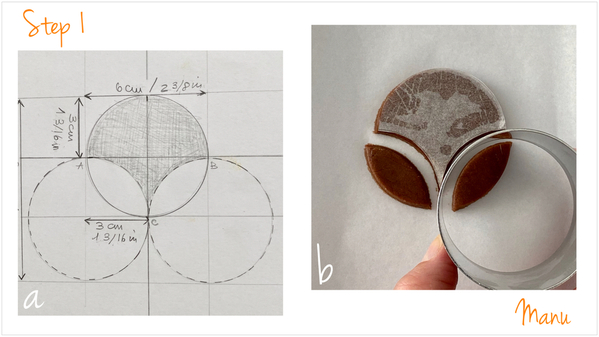


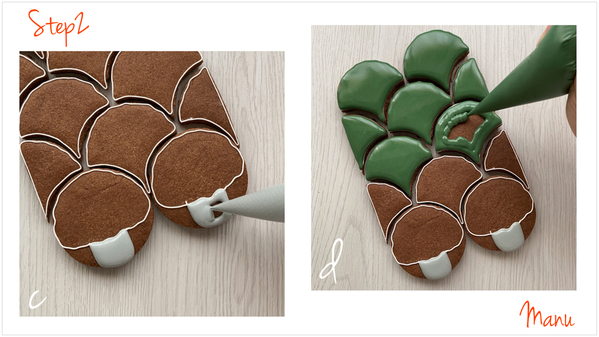
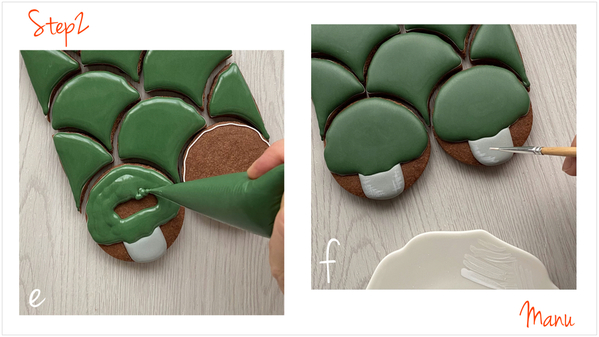
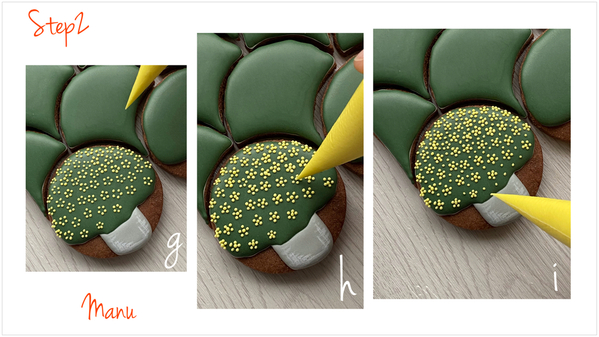
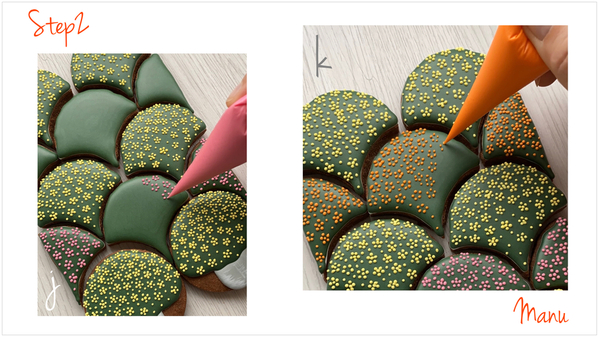
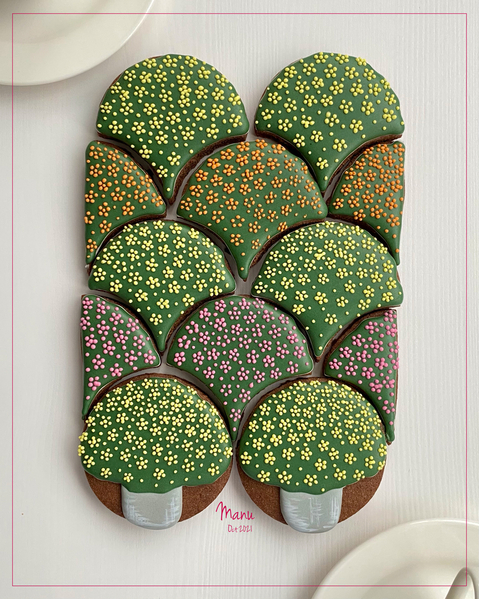
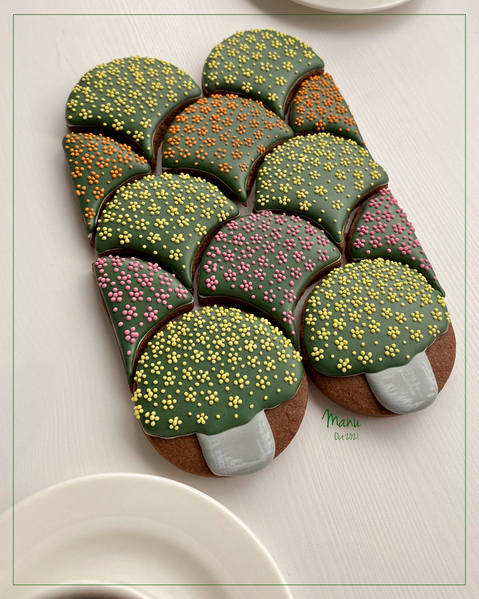
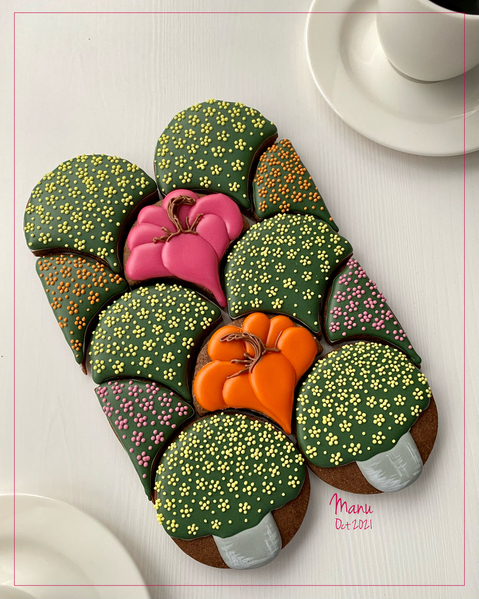



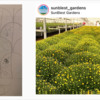
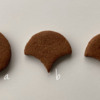


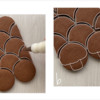







Comments (8)